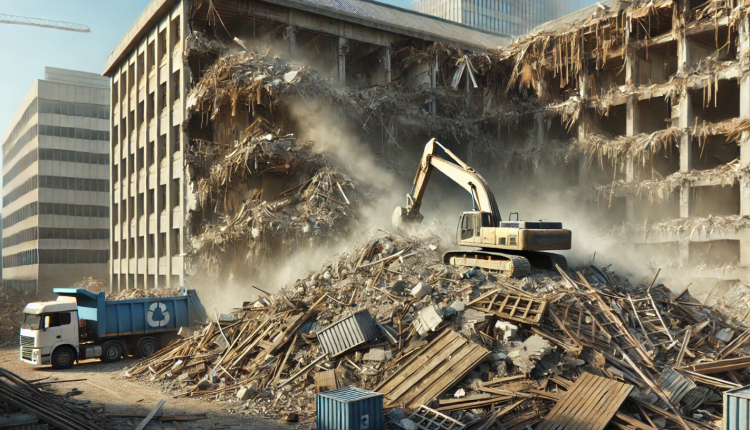- Advertisement -
The construction industry is a significant contributor to global waste generation, with construction and demolition (C&D) activities producing substantial amounts of debris annually. Effective recycling of C&D waste not only conserves natural resources but also reduces environmental impacts and promotes sustainable development.
Types of Construction and Demolition Waste
C&D waste encompasses a variety of materials, including:
- Concrete and Asphalt: Often originating from demolished structures and roadways, these materials can be crushed and reused in new construction projects.
- Wood: Salvaged lumber can be repurposed for new building projects or processed into mulch and biomass fuel.
- Metals: Steel, aluminum, and copper are valuable materials that can be recycled indefinitely without losing their properties.
- Bricks and Masonry: These can be cleaned and reused or crushed for use as aggregate in new construction.
- Glass: Windows and other glass products can be recycled into new glass items or used as aggregate in concrete.
- Plastics: Various plastic materials can be recycled into new products, reducing the demand for virgin plastics.
Benefits of Recycling C&D Waste
Recycling C&D waste offers numerous advantages:
- Resource Conservation: Reusing materials reduces the need for extracting and processing raw materials, preserving finite resources.
- Energy Savings: Recycling processes often consume less energy compared to producing materials from scratch. For instance, recycling metal saves up to 95% of the energy required to produce the same amount from raw ore.
- Landfill Reduction: Diverting C&D waste from landfills decreases the burden on these facilities and reduces the environmental impacts associated with landfill use.
- Economic Opportunities: The recycling industry creates jobs in collection, processing, and resale of materials, contributing to economic growth.
Challenges in Recycling C&D Waste
Despite its benefits, recycling C&D waste presents challenges:
- Contamination: Mixed waste streams can lead to contamination, making recycling processes more complex and costly.
- Market Fluctuations: The value of recyclable materials can vary, affecting the economic viability of recycling operations.
- Regulatory Barriers: Inconsistent regulations across regions can hinder the development of efficient recycling programs.
Strategies for Effective C&D Waste Recycling
To enhance the recycling of C&D waste, consider the following strategies:
- Source Separation: Implementing on-site sorting of materials can improve the quality of recyclables and reduce contamination.
- Design for Deconstruction: Designing buildings with future deconstruction in mind facilitates the reuse and recycling of materials.
- Education and Training: Providing training for construction professionals on best practices for waste management can increase recycling rates.
- Policy Support: Advocating for supportive policies and regulations can create a favorable environment for C&D waste recycling initiatives.
Conclusion
Recycling construction and demolition waste is a critical component of sustainable construction practices. By effectively managing C&D waste, we can conserve resources, save energy, reduce environmental impacts, and create economic opportunities, contributing to a more sustainable future.

